Breaking Barriers, Building Futures: Recognising Women Cotton Farmers
Recent studies by BCI reveal the scale of women’s contributions to cotton – and the hurdles they face in moving from invisible labourers to equal decision-makers.
Read moreRecent studies by BCI reveal the scale of women’s contributions to cotton – and the hurdles they face in moving from invisible labourers to equal decision-makers.
Read moreEva Benavidez Clayton, Senior Director of Demand & Engagement at the Better Cotton Initiative, reflects on BCI’s increasing emphasis on regenerative agriculture.
Read moreA network of multistakeholder initiatives, including the Better Cotton Initiative, Cotton Incorporated, Cotton Australia, and the U.S. Cotton Trust Protocol, has released new guidelines on Lifecycle Assessments.
Read more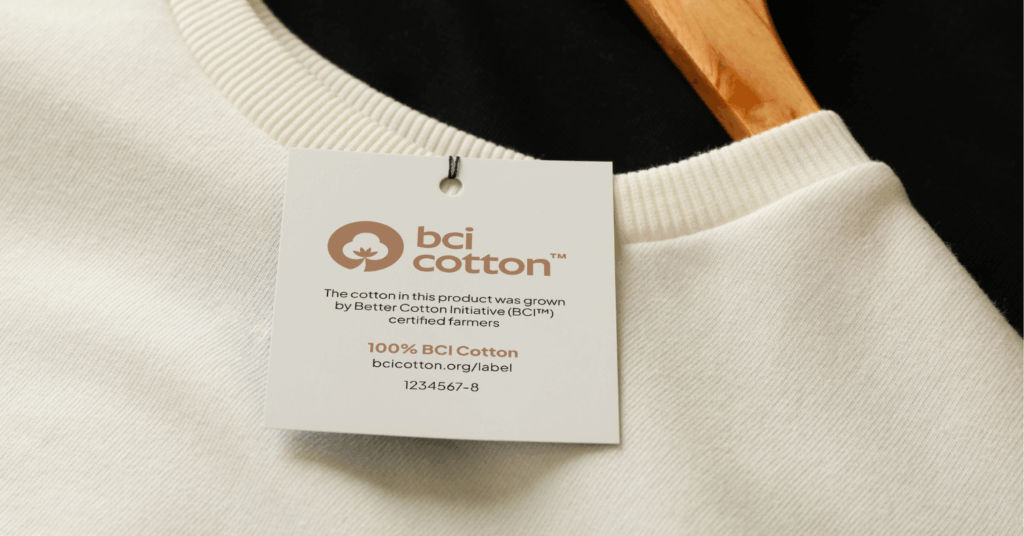

The Better Cotton Initiative (BCI) has launched an innovative product label for the fashion and textile sectors which allows retailer and brand members to provide consumers with greater clarity about the origin and percentage of BCI Cotton in their products.
The new label, launched on this year’s World Cotton Day, will enable retailers and brands to claim with confidence that their products contain physical BCI Cotton, certified by a third-party body, that has been traced from its country of origin. The label is expected to gradually arrive in stores in the coming months.
Nick Weatherill, CEO at the Better Cotton Initiative, said: “In a time of increasing scrutiny around sustainability claims, global trade pressures, and shifting Environmental, Social, and Governance (ESG) priorities, transparency and accountability are more critical than ever.
“As we celebrate World Cotton Day, our new label reaffirms our commitment to both, as part of our mission to drive measurable impact and continuous improvement in sustainability across the cotton sector.”
Alongside the launch of the new label, the organisation has announced that as part of a refreshed brand identity, it will call itself the Better Cotton Initiative (BCI), a move that provides more clarity to both its institutional identify and the cotton it sources, now to be called BCI Cotton. The new label and brand come as the Better Cotton Initiative publishes its 2024/2025 Annual Report, highlighting the impact of its programmes over more than 15 years in driving environmental, social, and economic improvements in cotton farming. This impact includes:
Nick Weatherill added: “These results represent real change in cotton farming communities around the world. Both our new label and annual report are more than updates, they are evidence of our steadfast determination to catalyse and scale sustainable practices in cotton production. We are proud of our progress but also recognise there is much more to do. Time is of the essence, and with our multistakeholder membership and network of field-level partners, I’m confident we will rise to the challenge.”
The Better Cotton Initiative (BCI) is the world’s largest cotton sustainability organisation, supporting farming communities to survive and thrive, while protecting and restoring the environment. BCI convenes a global multistakeholder network of farm-level organisations, brands, government bodies, civil society and industry organisations and supply chain actors to promote the supply and demand for cotton produced with sustainable practices. Over the past 16 years, BCI has aligned more than a fifth of the world’s cotton with our farming standard, channelled €200 million to cotton-growing communities and helped supply chain actors towards their sustainability goals.
Read moreThe approval of the European Commission’s Omnibus I proposal by the European Parliament’s Committee on Legal Affairs, accepting controversial changes to key sustainability directives is of great concern. These changes, namely to the Corporate Sustainability Reporting Directive (CSRD) and the Corporate Sustainability Due Diligence Directive (CSDDD), threaten to significantly dilute business reporting and due diligence obligations.
Warning against the impact of the EP’s endorsement of the changes, Hélène Bohyn, Policy & Advocacy Manager at the Better Cotton Initiative said: “What is presented as ‘simplification’ is in truth a dangerous dilution of essential safeguards. The European Parliament’s endorsement of the changes significantly weakens legal pressure for corporate accountability and risks dismantling the transformative power of the CSRD and CSDDD – landmark frameworks built to protect human rights and the environment. We strongly urge the European Parliament to reconsider and call on businesses to resist the temptation to lower their standards.”
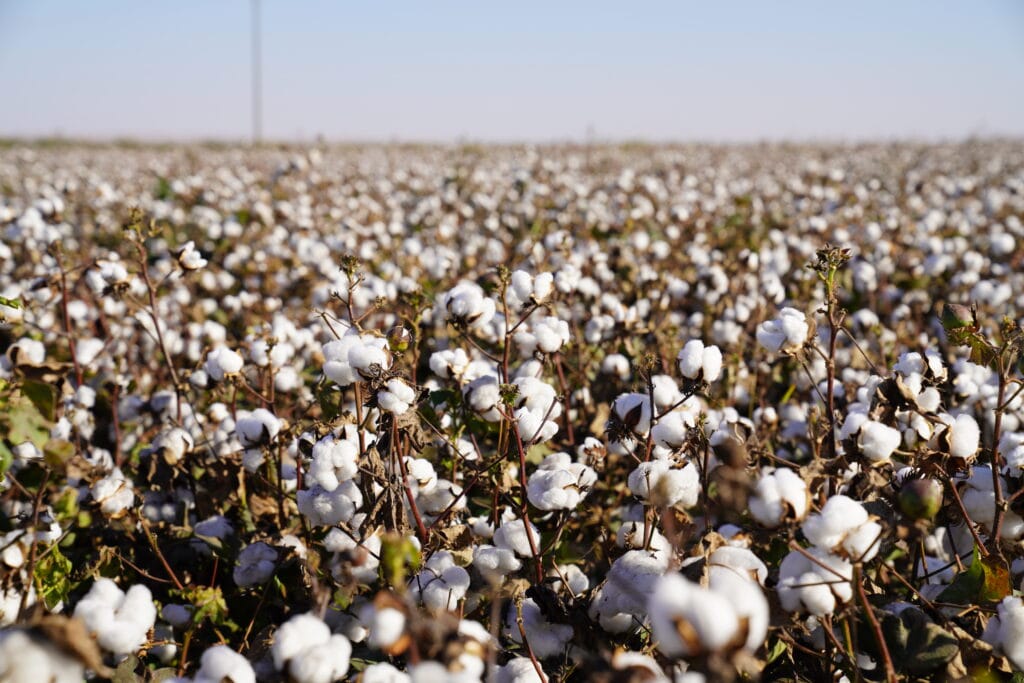

More about the EU’s sustainability directives: Omnibus Or Not, Due Diligence Is a Must: Policy Breakdown
Read more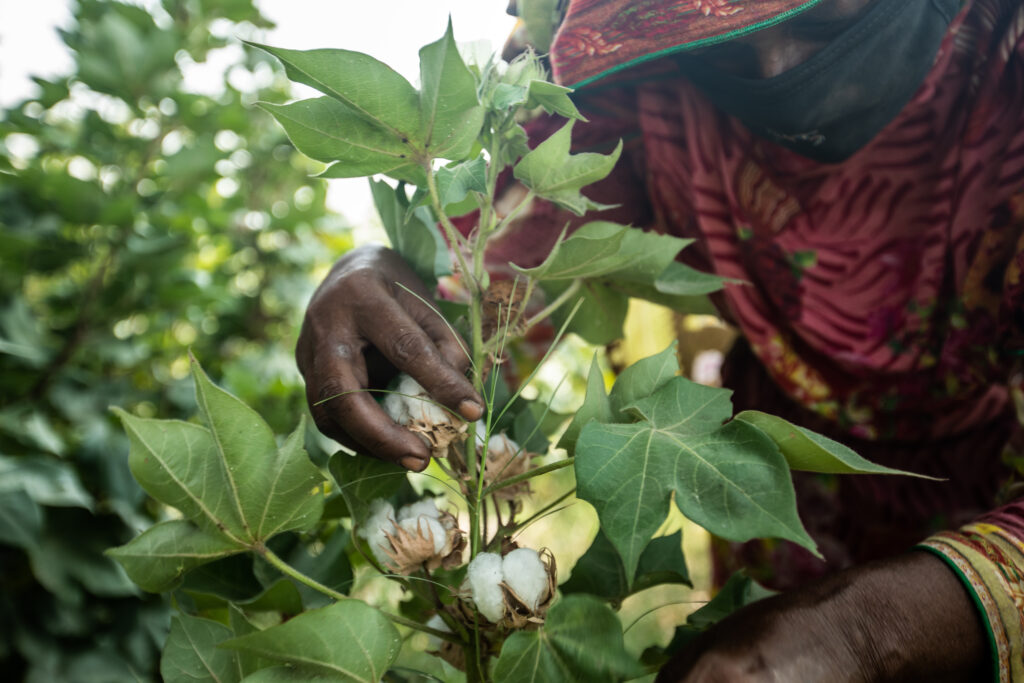

By Sahar Haq, Senior Social Impact Coordinator, and Amanda Noakes, Senior Decent Work Coordinator at the Better Cotton Initiative
What wages are actually paid on cotton farms in Pakistan? This is a vital question for the improvement of wages and decent working conditions in the sector – and one to which the Better Cotton Initiative (BCI) has been seeking the most reliable answers. With support from the ISEAL Innovations Fund, between July 2024 and April 2025 BCI launched a pioneering Wage Transparency pilot across Pakistan, in Punjab and Sindh provinces, in search of that missing information.
While low wages have long been recognised as a persistent challenge in cotton production, the extent of the gap between actual wages received and established benchmarks for minimum and living wages had not been systematically quantified until now. Through the pilot, BCI developed and tested a new wage sampling approach, collecting baseline wage data from the farms involved. The initiative aimed to understand how wages are set, paid, and distributed – specifically, for permanent , seasonal, hourly-rate , daily-rate and output-based workers, as well as sharecroppers.
Our new report offers unique insights into the project, with information from over 2,000 farmworkers and 200 farmers, covering nearly 25% of smallholder producer units across the country.
Beyond its immediate application, the project aims to contribute to broader sectoral learning and cross-initiative collaboration. By sharing its findings, BCI hopes to support and collaborate with other stakeholders navigating wage measurement challenges in low- and middle-income agricultural contexts, to explore solutions together.
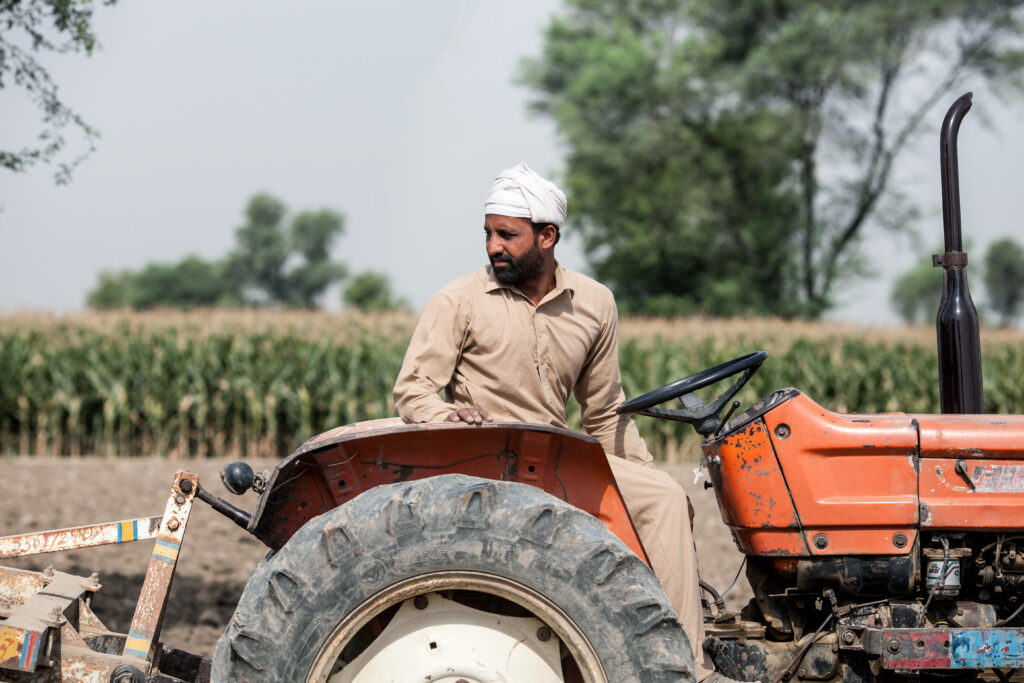

This milestone marks a big step forward in the Better Cotton Initiative’s mission to promote decent work, including wage improvements, and sustainable livelihoods, including income improvements, for farmers and workers.
BCI’s Programme Partners in Pakistan, Sangtani Women Rural Development Organisation (SWRDO), CABI Pakistan, WWF Pakistan and Rural Education and Economic Development Society (REEDS), participated in the pilot to develop the farm-level wage sampling tool.
The road ahead: beyond transparency
As BCI works to promote decent work and more sustainable value chains, wage transparency is an important tenet of our work, in line with our new Decent Work Strategy.
By establishing a reliable and scalable wage sampling tool, we have laid the groundwork not only for improved data collection but also for meaningful action to support wage improvements across cotton-producing communities. Ultimately, this initiative for us is about more than data – it is also about driving change.
To find out more, click here for the full report
Read more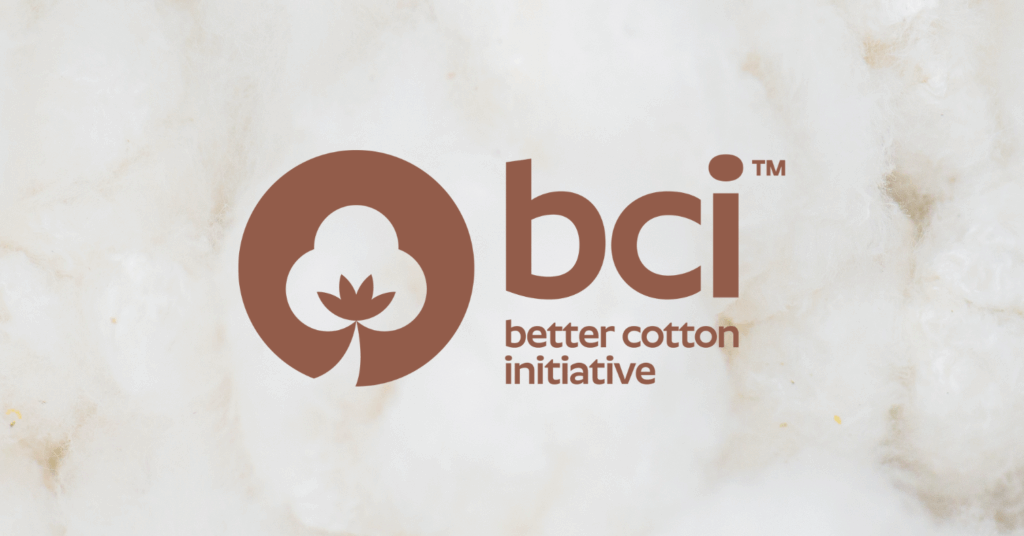

By Rogerio Simoes, Media & Content Manager at the Better Cotton Initiative
The Better Cotton Initiative (BCI) marked this year’s World Cotton Day with significant changes: it launched an innovative product label; it updated its logo, website, and overall design; and adopted its original name, having been known simply as Better Cotton in the past few years.
These changes may seem unrelated, but they are part of the same picture. They are connected to several steps taken recently by BCI to improve transparency, accountability, and its overall connection with members, partners, farmers, consumers, and the general public.
From the new label that now informs the presence of Physical BCI Cotton contained in a product to a name that emphasises the organisation’s role as an initiative, all that is the result of years of efforts to expand and deepen the organisation’s impact.
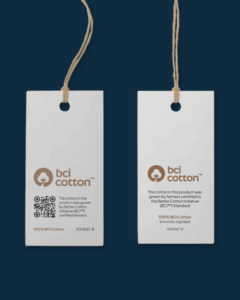

Our new product label comes out of the traceability system that has been gradually implemented since November 2023. In the past two years, we at the Better Cotton Initiative have been expanding our capacity to trade Physical BCI Cotton, traced back to its country of origin – offering brands, retailers and consumers the assurance of a commodity, BCI Cotton, produced by farmers certified to our standard.
Now, the BCI Cotton label will offer brands and retailers the ability to share with their consumers that story, on their own products. If a product sourced by a certified BCI Retailer or Brand Member contains at least 30% of Physical BCI Cotton, and the remaining up to 70% contain only other materials, that retailer or brand will now be able to share that information with consumers.
The new label, which is optional, provides the following:
Our CEO, Nick Weatherill, clearly summarised the meaning of our new product label. “In a time of increasing scrutiny around sustainability claims, global trade pressures, and shifting Environmental, Social, and Governance (ESG) priorities, transparency and accountability are more critical than ever.”
“As we celebrate World Cotton Day, our new label reaffirms our commitment to both, as part of our mission to drive measurable impact and continuous improvement in sustainability across the cotton sector.”
The BCI Cotton label comes in a year marked by another milestone. In June, during BCI’s annual conference in İzmir, Türkiye, we announced that the Better Cotton Initiative’s standard will close remaining gaps, so it is fully aligned with the fundamental principles of regenerative agriculture. While several principles of regenerative agriculture have already been followed by BCI alongside our certified farmers for years, a few elements remain to be fully implemented – and that is what the Better Cotton Initiative is now doing, with completion expected by June 2026.
None of these new steps, however, would be possible without something even more important: our impact throughout 16 years of operations, in more than 20 countries, improving conditions for over 2 million farmers. Much of this story can be found in the Better Cotton Initiative’s 2024-25 Annual Report, which goes beyond the achievements of the past year to provide a broader report of our impact over the years. You can download the report from this page.
With new label new logo, and new impact numbers that we proudly share with our community, embracing our original full name was an easy decision to make. By becoming once again the Better Cotton Initiative, we remind our farmers, members, and partners that BCI is and has always been an initiative, a forward movement committed to constantly improve sustainability in cotton farming.
Not only are we an initiative, but we are taking it too, by creating new ways of communicating with both our community and consumers – on top of the bold actions we have taken. Years ago, even though our mass balance system allowed us to achieve the scale required to support hundreds of thousands of farmers every year, we took the initiative to develop, introduce, and expand our own traceability system.
We also took the initiative to become a certification system in February of this year. The certification process, conducted by independent third parties, was another important step towards full accountability and transparency, aligning what brands and consumers increasingly demand from us with our responsibility to support farmers, their families, and their communities.
Whilst the changes above were still being implemented, again we took the initiative, by announcing that the BCI standard would become a regenerative one. Being an initiative was in our creation, has been part of our DNA since then, and it is now once again officially part of our name.
We hope our farmers, members, partners and colleagues appreciate and make good use of our changes, proudly announced on this year’s World Cotton Day. They can be certain that, behind new visual identify, name, and label, one thing remains the same: our determination to improve sustainability in cotton production, including delivering to consumers the information and the results they expect and deserve to see.
Press release: Better Cotton Initiative Marks World Cotton Day with Launch of Innovative Product Label
Our new BCI Cotton label page: What the BCI Cotton Label Means
Read moreBetter Cotton has teamed up with climate technology startup Planboo to help cotton farmers reduce greenhouse gas emissions – and earn carbon credits for it.
Read moreAbdur Rehman, Better Cotton Farmer, demonstrating habitat creation for beneficial birds (birdhouses and water dishes).
Read more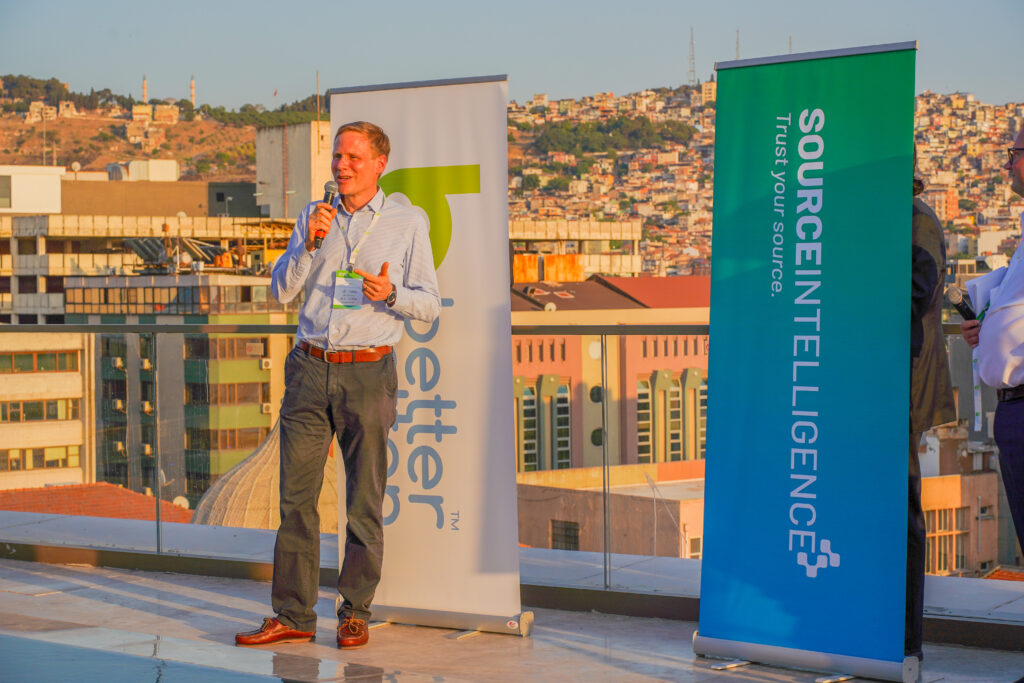

By Alexander Ellebrecht, Account Executive at Source Intelligence
Source Intelligence was Sponsor at the Better Cotton Conference 2025 in İzmir, Türkiye
At Source Intelligence, we help companies strengthen supply chain visibility and compliance through two complementary platforms. C Map enables organizations to meet complex regulatory requirements by leveraging bill of materials (BOM) data across multiple tiers of their supply chain. ChainPoint serves standards and scheme holders, supporting first-mile traceability and capturing critical data that is often difficult to obtain. We are now integrating these platforms. This will deliver deeper transparency and greater value, not only for standards organizations, members, and stakeholders, but also for shareholders. Because today, transparency is not optional anymore.
Better Cotton has taken a thoughtful, step-by-step approach to building traceability using ChainPoint. They started with ginner-to-spinner traceability, then gradually extended the scope and introduced more detailed claim types. Several years ago, the system was based largely on a mass balance approach—a method that allows Better Cotton Claim Units (BCCUs) to be traded through the supply chain while maintaining an associated sustainability claim, even if the cotton is mixed with conventional sources. In recent years, the demand for visibility has grown. More companies now want to know with certainty: “Is this 100% Better Cotton that we are buying?”
This shift has led to the adoption of segregated models, which keep Better Cotton physically separate from conventional cotton throughout the chain. These models provide higher transparency and stronger claims. It’s a journey Better Cotton is still on—and one we are proud to support.
The cotton industry is aware of its impact. We hear many farmer stories, of farmers who could improve their production with training and support from Better Cotton. Topics like irrigation, regenerative agriculture, are addressed, and it’s good to discuss this with the sector at the Better Cotton conference. These discussions help retailers and companies, at the end of the supply chain, understand the problems on the ground, while also creating opportunities for more collaboration.
With the existence of social media, companies are becoming increasingly responsible and accountable for their supply chain activities. We also see some government regulations and compliance topics, so there is really a driver for transparency. Transparency will not go away. It will stay on the agenda.
One principle I particularly appreciate is controlled transparency. This means not every piece of information is available to everyone, but rather that access is purposeful and relevant. This approach fosters trust, encourages openness, and enables more efficient collaboration.
We should be proud of how far we’ve come, but we must also keep asking: What can we do better? By applying proven quality management practices, we can work more efficiently, accelerate progress, and deliver lasting improvements. We’re also seeing strong growth in the collection and management of reliable data. Automation is making documentation less of a burden and more of an opportunity—helping people focus on insight and action rather than paperwork.
The Better Cotton Conference matters because it’s ultimately about people. Progress in supply chains depends on collaboration, and while we have many digital tools—Zoom, Teams, and others—that make connecting easier, nothing replaces the depth of understanding that comes from meeting in person.
Read more